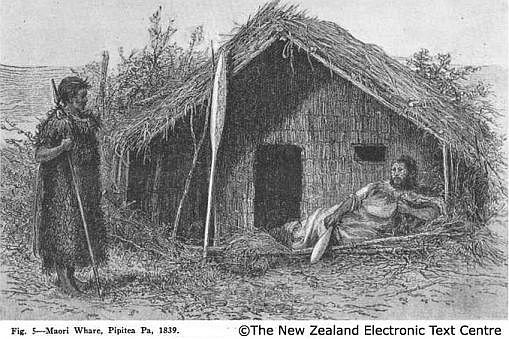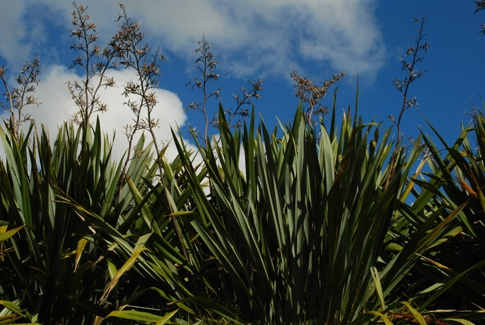Rongoā is the traditional Māori healing system. Rongoā is a holistic practice that often includes using the medicinal properties of Aotearoa New Zealand native plants.
Early Māori and rongoā
Although early Māori may not have known what today’s scientists know about our immune system, they had worked out how to treat diseases and infection. The use of rongoā prevented many sicknesses and provided remedies for those who were already sick. Joseph Banks, an 18th century scientist who travelled with Captain James Cook, observed that Māori were in good health and appeared to suffer from few diseases.
Traditionally, Māori had a holistic approach to healing. It included the mind, body and spirit – mauri (spark or life force), tapu (natural law) and wairua (spirit). Whakapapa (genealogy) was also a factor to consider in the healing process. Tohunga, the medical practitioners or healers of the Māori world, passed their knowledge down through the generations, and modern Māori healers still use many of the concepts and practices.
Rongoā fighting infection
Rongoā is still used extensively today – many of the medicines from plants are used to fight infection. It was, and still is, important that the gathering of rongoā plants be carried out in a sustainable way to ensure that there will still be some the next time it is needed. Some of these plants can be toxic and should only be prepared by people who have been trained in the art of rongoā.
The following plants are some examples of plants that can be used for rongoā and that are used to fight infection.
Koromiko
The young leaf tips can be chewed for diarrhoea and dysentery. Dried leaves sent to New Zealand soldiers in the Second World War for this purpose were very effective.
Koromiko leaves can also be used for ulcers and sores and have been used as a poultice on babies for skin sores. The active ingredient is phenolic glycocide.
Kōwhai
All the parts of the kōwhai including the bark, inner bark, flowers, leaves and juice can be used as rongoā. Kōwhai can be used for cuts, infected skin, wounds and skin diseases. Colds and sore throats have been treated with infused kōwhai bark. There are toxic alkaloids in the tree, so people have to prepare the rongoā carefully.
Harakeke (flax)
The sticky gum in flax is used as an external treatment for boils and wounds. Leaves can be used as a dressing to aid healing, and the juice acts as a disinfectant for wounds. A poultice of the root can be used to treat intestinal parasites.
In this article Stephen Tauwhare talks about The Harakeke Project and how scientific knowledge can be combined with traditional Māori knowledge. Watch this video to learn more about the medicinal benefits of harakeke.
Pōhutukawa
The inner bark, when infused, can be used to treat dysentery and diarrhoea (it contains ellagic acid), and the nectar of the flowers has helped to alleviate sore throats.
Pūriri
Pūriri leaves can be infused and used to treat ulcers and sore throats, best gargled and not swallowed
Kawakawa
The leaves can be used to heal cuts and wounds. Chewing the leaves eases the pain of toothache and abdominal distress.
High school student Chris Ryan researched the medicinal properties of kawakawa, read about it in this Connected journal article.
Fungi and rongoā
A number of fungi were used in rongoā, for example, pukurau (puffballs) were used to stop bleeding and for pain relief from scalds and burns. Learn more in the interactive below.
Nature of science
Although most of our science knowledge to do with fighting infection has come through western culture, other cultures, such as Māori culture, have long been aware of medicines that fight or prevent infection.
Activity ideas
In this activity, Using rongoā Māori, students learn about rongoā Māori through a silent card game.
In the Māori knowledge and uses of fungi quiz, students can test their knowledge online or in a paper-based quiz. The quiz can be used as an introductory tool to gauge students’ prior knowledge, as a summative assessment or as an engaging treasure hunt to introduce students to some of the different fungi early Māori used for kai or rongoā.
This interactive curates videos from Ngāi Tahu along with supporting resources to explore 12 mahinga kai practices, including rongoā.
Explore our collection of Rongoā Māori resources on the Science Learning Hub, included are helpful notes for teachers. Login to make this collection part of your private collection – just click on the copy icon. You can then add additional content, notes and make other changes.
Useful links
In this YouTube video from Te Papa, Te Waari Carkeek and members of his family demonstrate a remedy for sprains, strains and broken bones, using the poisonous plant tutu (Coriaria species).
In this Department of Conservation blog article Rob McGowan explains why we need to care for rongoā plants to help Papatūānuku thrive.
The Meaning of Trees explores the history, use and significance of New Zealand’s native plant species. Here you will find information about the role plants have played throughout history, and how they have been used for medicine, food, shelter, science and spirituality.
See the book Rongoa Maori: A Practical Guide to Traditional Maori Medicine by Rob McGowan.




